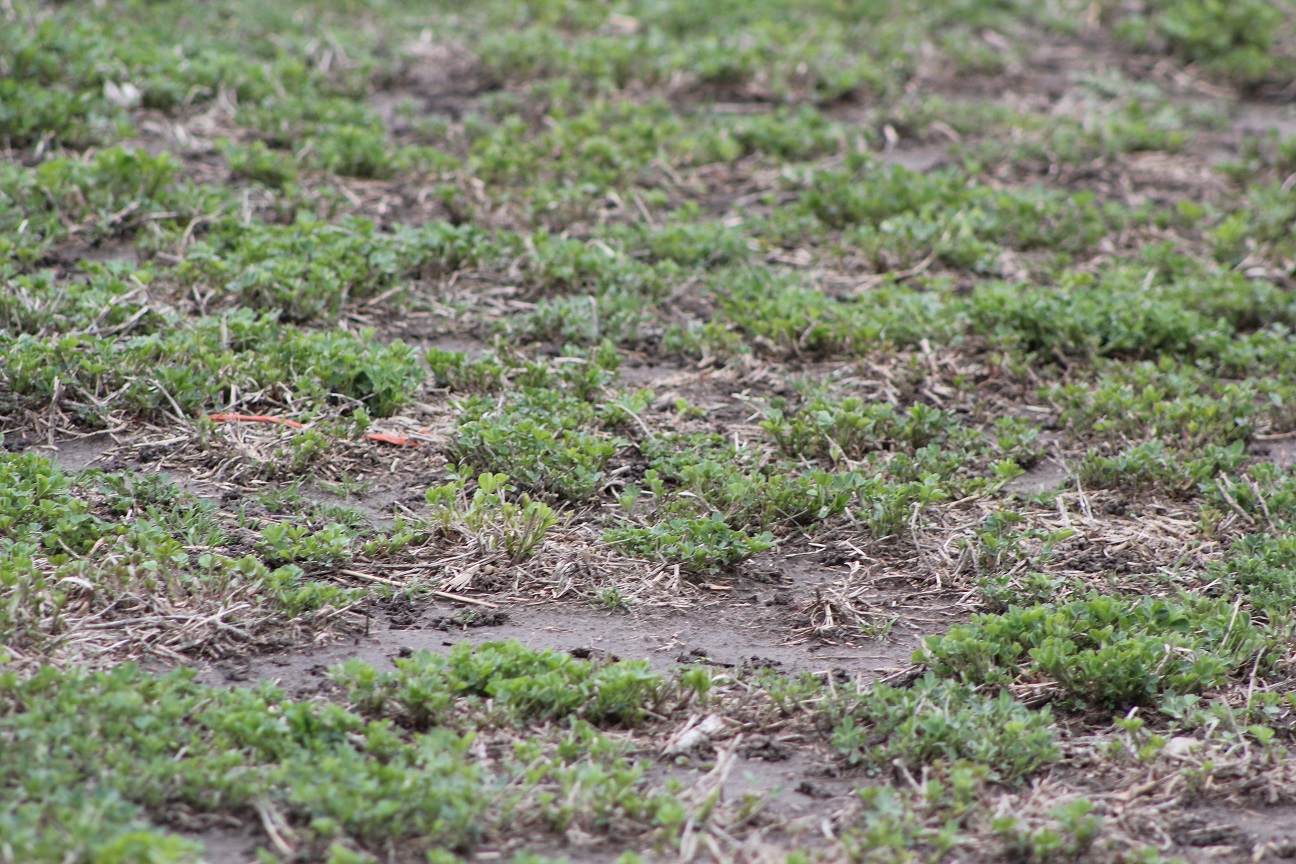
By Bruce Anderson, Nebraska Extension Forage Specialist
Alfalfa usually comes through the winter in pretty good shape in our area, so rarely do I worry much about it. And I hope we will avoid serious losses this year.
But this has been an unusual winter. The lack of snow cover during cold temperatures this winter could have permitted cold injury. Or more likely, it enabled dry winter winds to dry out and kill some exposed plants. Then high temperatures in February and early March caused much alfalfa to break dormancy early; recent cold set it back.
Evaluate your own stands early this spring. Older, dryland fields that have fewer than 30 new shoots per square foot coming from 2 or 3 plants may need to be rotated soon to a different crop and new fields planted to alfalfa. Very productive sites, such as irrigated and sub-irrigated fields, should have at least 40 shoots per square foot from 4 to 6 plants. Anything less is a strong candidate for rotation. We tend to lose about one tenth of a ton in yield potential for every shoot below these numbers.
Check for these densities in several areas of your fields when the early shoots are 4 to 6 inches tall. Since some shoots begin growing later than others, stands with enough plants but slightly low shoot density may be alright, especially if shoot height and distribution is fairly uniform. But, if plant density is low, or shoot growth is not uniform, yields probably will be lowered.
Check your alfalfa stands soon after growth begins. Then you will still have time to make any needed changes in your cropping plans.
To listen to BeefWatch podcasts go to: https://itunes.apple.com/us/podcast/unl-beefwatch/id964198047 or paste http://feeds.feedburner.com/unlbeefwatch into your podcast app.